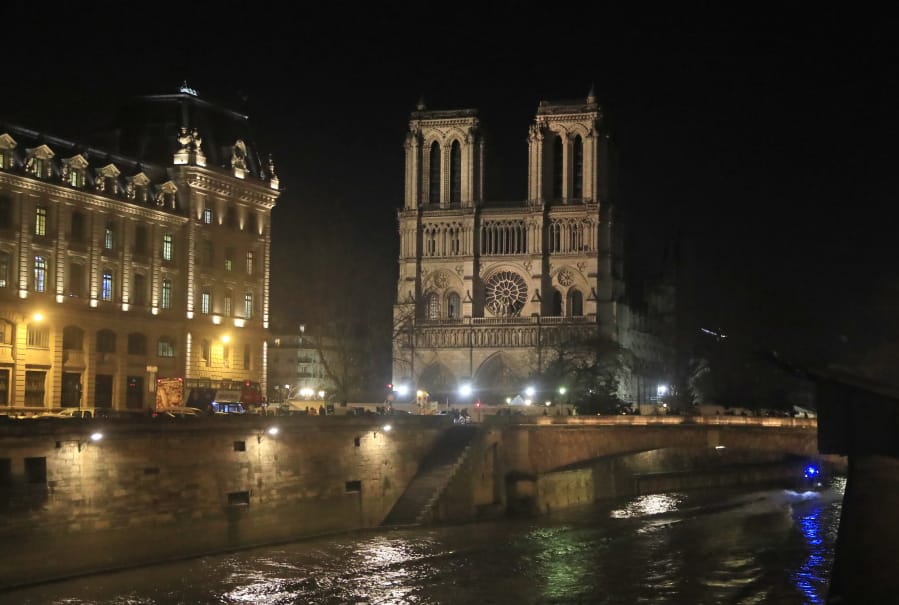PARIS — It took a blaze that nearly destroyed Paris’ most famous cathedral to reveal a gap in global safety regulations for lead, a toxic building material found across many historic cities.
After the Notre Dame fire in April spewed dozens of tons of toxic lead-dust into the atmosphere in just a few hours, Paris authorities discovered a problem with the city’s public safety regulations: There was no threshold for them to gauge how dangerous the potentially deadly pollution was from the dust that settled on the ground.
Since then, The Associated Press has found this regulatory gap extends far beyond France. Officials in other historic European capitals such as Rome and London, as well as the U.S. Environmental Protection Agency and the World Health Organization also have no such outdoor lead dust hazard guidelines.
The reason, they say, is that although there are lead regulations, no one contemplated a conflagration on a lead-laden building the scale of Notre Dame — whose spire towered nearly 330 feet high.
Poisoning from lead dust can cause permanent loss to cognitive ability, seizures, coma, or death — and exposure is of greatest risk to pregnant mothers and to young children, who can easily transfer toxic dust into their mouths.
After 250 tons of lead on Notre Dame’s spire and roof was engulfed in flames in central Paris on April 15 and authorities alerted Parisians to an environmental health risk, they were forced to cobble together disparate and incomplete research to set a makeshift safety level in an attempt reassure the public.
“When the Notre Dame fire happened, we didn’t have any threshold for what represented dangerous lead levels outdoors,” Anne Souyris, the Paris City Hall deputy mayor in charge of public health, told the AP. “It was a wake-up call … the amount of lead that was burned in Notre Dame was unprecedented.”
Officials were surprised to discover that while safety guidelines exist in France for lead levels inside buildings and schools, as well as in paint, soil and air pollution, there were zero hazard guidelines for lead accumulations in public spaces, such as dust on the ground.
The inherent danger and the regulatory gap for lead dust became impossible to ignore for French officials as it collected as a toxic film on the cobblestones of Paris’ Ile-de-la-Cite following the fire.
“The authorities basically tried to create safety guidelines after the fire by piecing together a mixture of old fragments of data and reports,” Souyris said. “But there was really nothing official … we simply didn’t realize that lead outside might be a problem.”
On July 18 — three months after the inferno — Paris’ Regional Health Agency (ARS) said it designated 4,180 mcg per square yard as a concerning level for lead dust in public spaces. It also acknowledged there was an “absence of regulatory thresholds … regarding the presence of lead in dust deposited on roads.”
AP learned from health officials that this figure was compiled by using incomplete data, including a French Culture Ministry report assessing lead levels in Paris monuments.
Some media outlets reported that registered levels of lead contamination in locations surrounding the fire-damaged cathedral ranged between 500 and 800 times the official safe levels.



